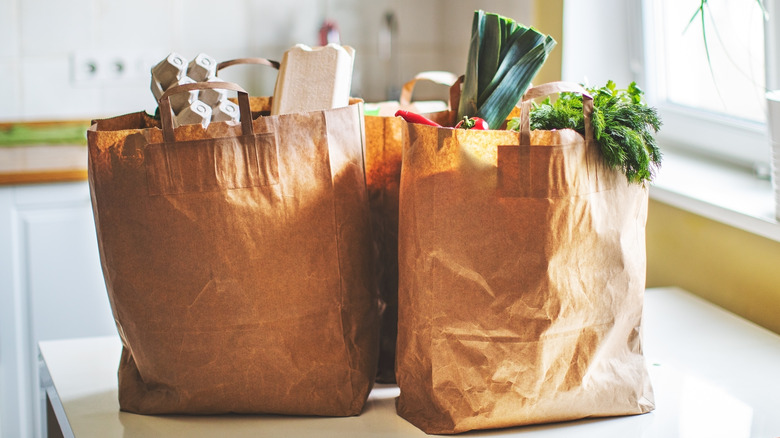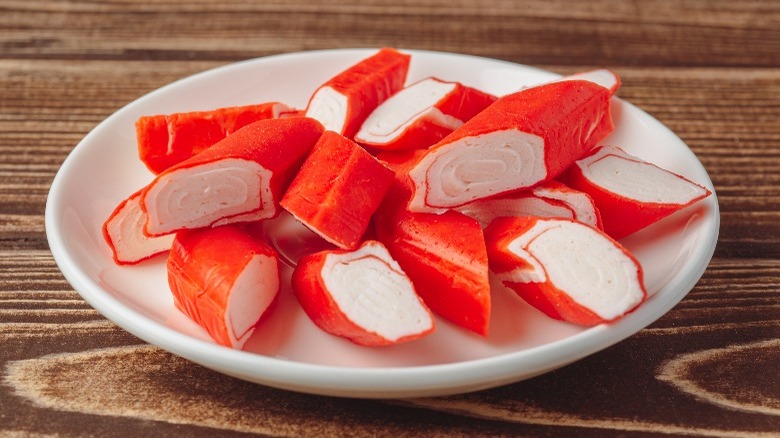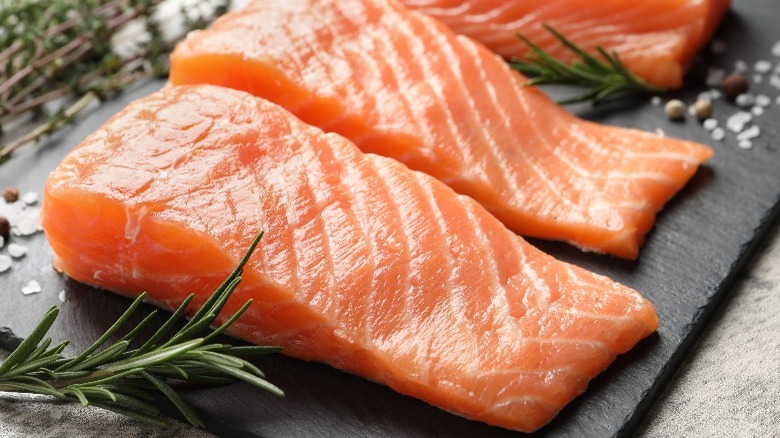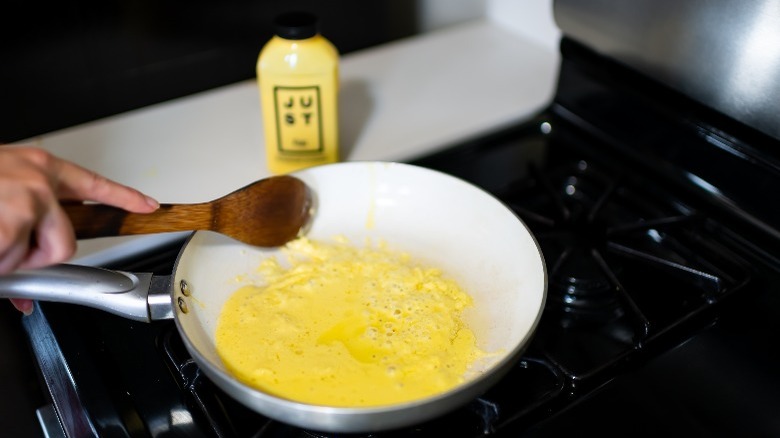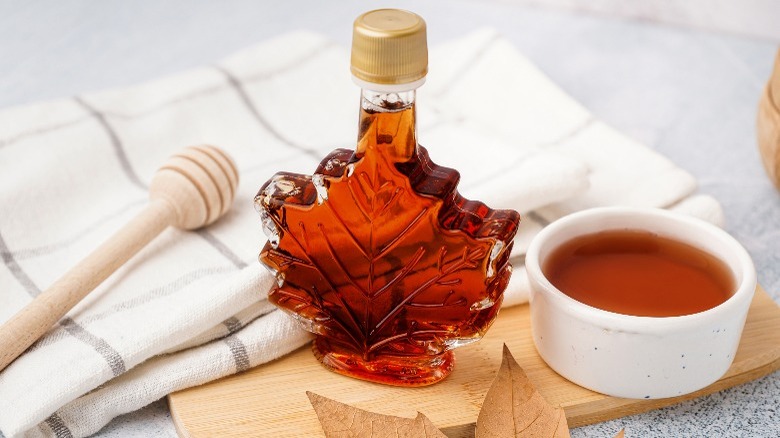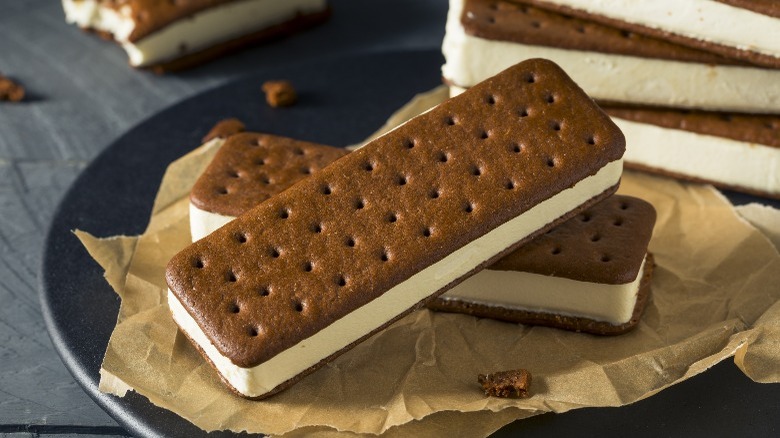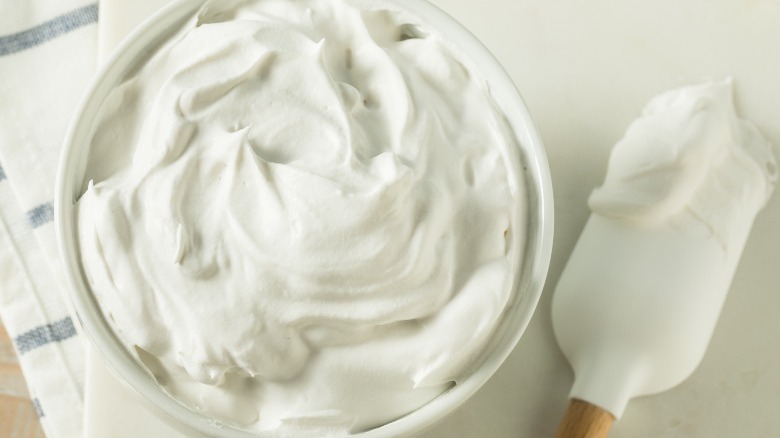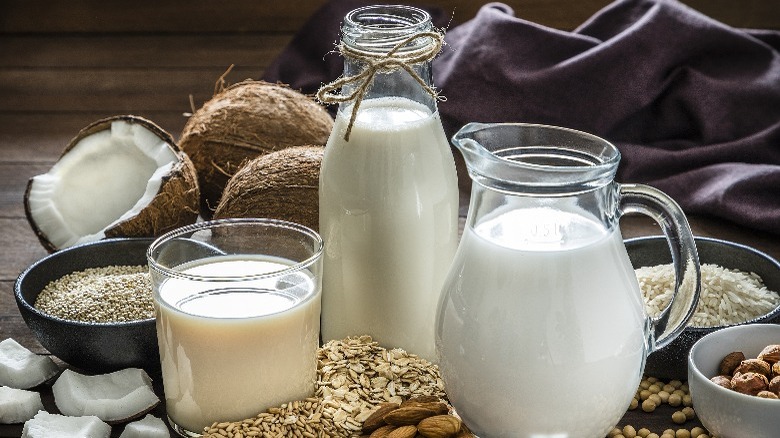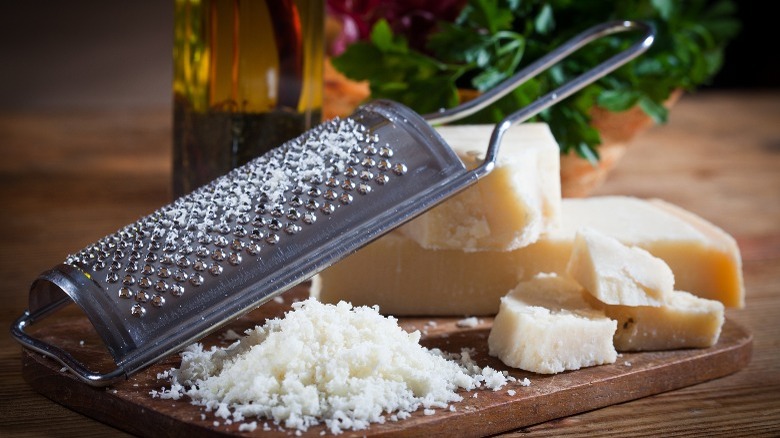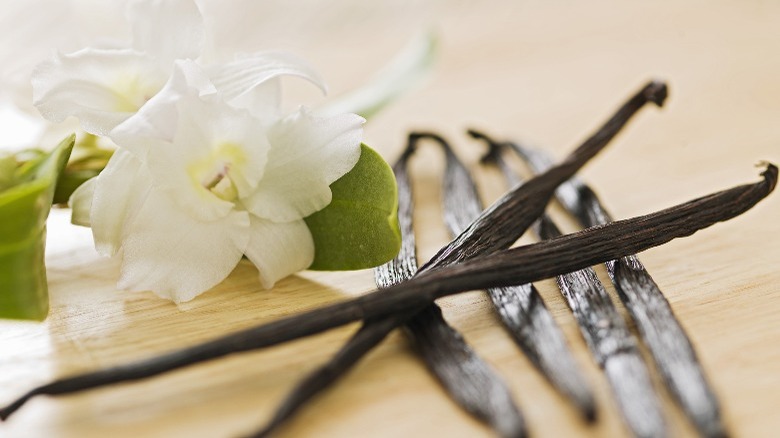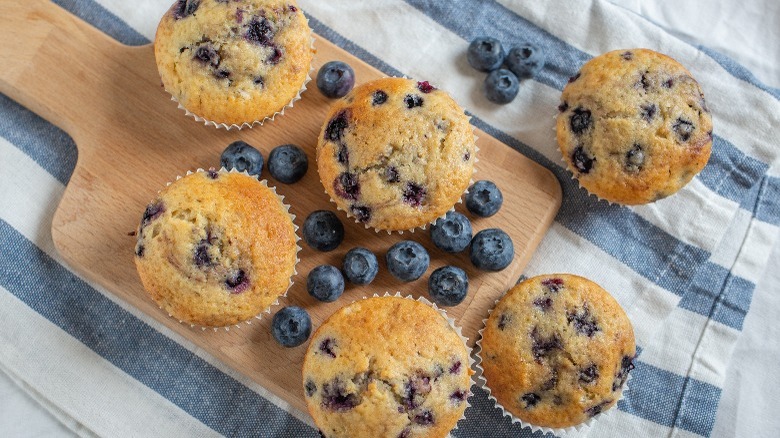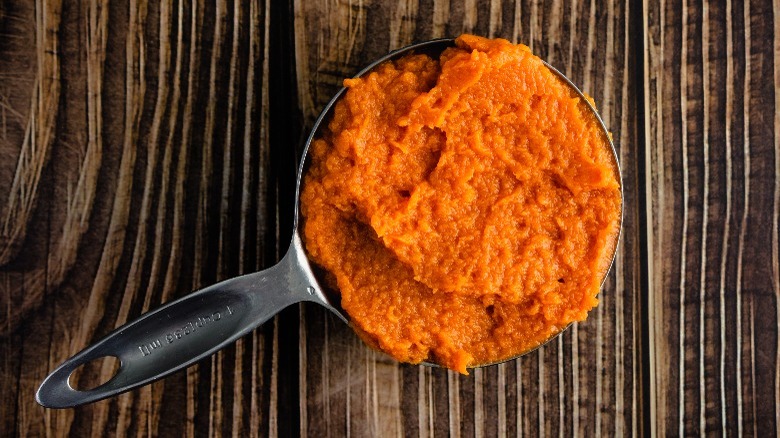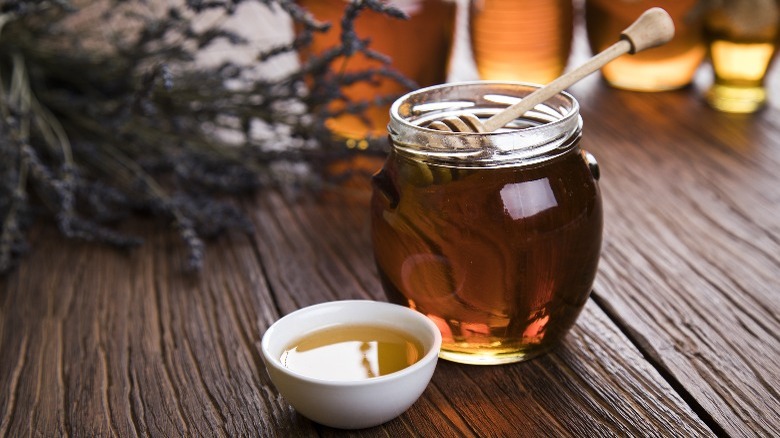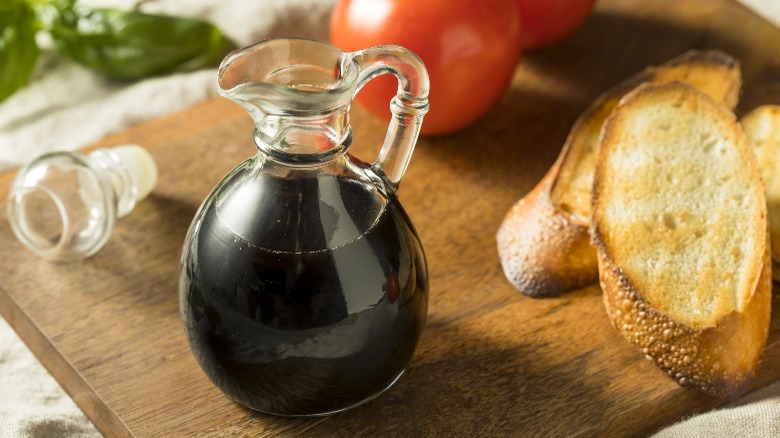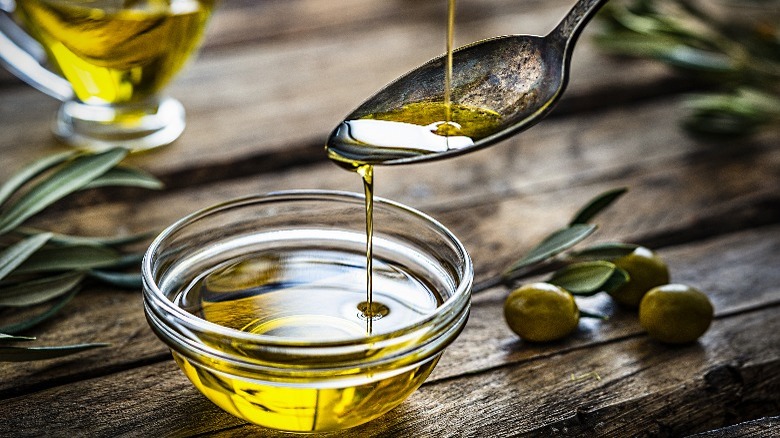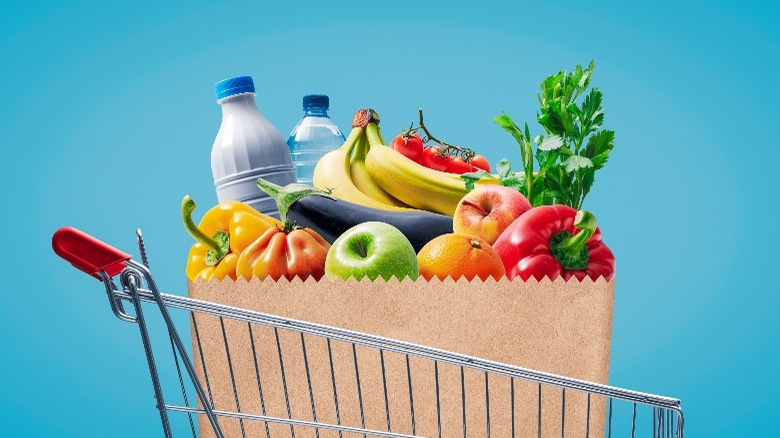7 Imitation Foods You Should Eat And 7 To Avoid Completely
You probably expect food product labels to be honest up-front and describe exactly what you are buying at the grocery store. In reality, your favorite foods may not be what they seem. The fact is that fraud affects the food industry at an estimated cost of up to $40 billion per year, according to the FDA. Mislabeling, counterfeit products, and making substitutions with inferior ingredients all contribute to foods that we think are the real deal, but are actually much lower quality and potentially harmful to our health.
That said, not all fake foods are trying to pull the wool over shoppers' eyes. There are a variety of imitation foods that proudly display their true natures on the product labels, many of which are worth the purchase. If you still cannot spot the fake, a quick scan of the ingredients list can reveal a lot about a product. Learn which imitation foods are worth keeping around your kitchen and how to weed out food frauds. This list assesses imitation foods based on nutrition, price, honesty in the market, and comparison to authentic products.
Buy: Imitation crab
Even if you think you have never come across imitation crab, the reality is you probably have eaten it at some point. California rolls from your favorite sushi spot and crab rangoons from your go-to Chinese takeout restaurant are just a few examples of dishes that probably use this imitation food instead of real crab. Affectionately called "the hot dog of the sea," imitation crab is made from surimi — deboned fish like Alaskan pollock, cod, or paddock minced into a paste — where it is then processed, pressed, and colored to mimic the look of crab meat.
Imitation crab is a common substitute in a variety of crab dishes because of its affordability. It costs a fraction of the market price for real crab meat and can be seamlessly swapped into recipes. Imitation crab is also much easier to prepare than fresh crab meat, which needs to be cleaned and removed from the shell before being used in cooking. While imitation crab may be more processed than real crab meat, it is a great substitute to use on a budget for a variety of crab dishes.
Avoid: Certain types of fish and seafood
Seafood fraud is a major issue in the food industry. Seafood species are often mislabeled in order to sell cheaper, lower-quality fish for a higher market price. Overfishing is a problem worldwide; 84% of the seafood eaten in the U.S. is imported, only 2% of which is inspected by the FDA, notes Oceana. This leaves many shoppers overpaying for cheap seafood disguised as something of higher quality.
Seafood mislabeling occurs often for fish varieties like red snapper and Atlantic cod. In fact, grouper can be a red flag if the price seems too good to be true. Grouper is often swapped out for pangasius, a fish that is cheaper to feed and easier to produce in large amounts than grouper. Salmon has also been a victim of seafood fraud. Farm-raised salmon is often mislabeled as wild-caught, sometimes rainbow trout is sold as salmon, and cheaper varieties of salmon are frequently sold as expensive king salmon.
It can be tricky to spot the fake in the seafood department. A good place to start is by researching what the seafood you are purchasing looks like. Farm-raised salmon has more visible white lines of fat while wild-caught salmon has little fat and is a more vibrant orange color. The selling price is also a good giveaway. While a cheaper price might seem like a good deal, understanding the typical price of seafood could help you get what you are paying for.
Buy: Imitation eggs
The innovations of the culinary world have brought us a variety of plant-based products, and imitation eggs have found their place on grocery store shelves alongside soy milk and dairy-free cheese. There are many different egg substitutes on the market that can be cooked to mimic the appearance and flavor of scrambled eggs or even mixed into recipes as a binder for baking. Originally made with flax or chia seeds, modern egg substitutes are a combination of cellulose and other volumizing agents to recreate the fluffy texture of eggs with nutritional yeast and seasonings for a savory flavor.
Plant-based eggs are a great alternative to the real thing, especially if you are vegan or have an egg allergy. Regular eggs are considered a healthy food, packed with protein and essential nutrients, but also high in cholesterol. Unlike regular eggs, vegan eggs have no cholesterol, making them a perfect substitute to support a healthy heart. JUST egg is a popular grocery store imitation option, made from mung bean protein and sold in large bottles for easy pouring. You can even make your own imitation eggs by combining ground flax seeds with water, making the perfect egg replacer for baking.
Avoid: Maple-flavored pancake syrup
A tall stack of pancakes is not complete without a hearty drizzle of sweet maple syrup. There are many maple syrup imitators out there, but it is fairly easy to weed out the fakers with a few key tricks. Reading the label is one of the best ways to tell if a bottle of maple syrup is real. Real maple syrup will list pure maple syrup as the only ingredient and the imitator will have many ingredients listed, but never maple syrup. The fake stuff is primarily made from corn syrup with artificial maple flavoring and caramel color. Imitation syrup will also be typically labeled as "pancake syrup," while the real syrup has "maple syrup" proudly printed on the front of the bottle.
Real maple syrup tends to be much more expensive than imitation syrup, but the higher price tag is worth it. Maple syrup has a much more concentrated maple flavor and is runny when poured out of the bottle. Pancake syrup is thicker and tastes more like concentrated sugar. The next time you need a pancake topper, spending a few extra dollars on real maple syrup will take your breakfast up a notch.
Buy: Frozen dairy desserts
The words "frozen dairy dessert" probably do not sound as appealing to most people as "ice cream." In reality, you may be surprised by how many ice cream products in the freezer aisle are not considered ice cream by the FDA. According to the FDA, real ice cream must contain 10% dairy milkfat and weigh 4.5 pounds to the gallon. Many manufacturers whip air into ice cream, making it lighter and increasing its volume before packaging and shipping. Because of these regulations, real ice cream tends to be creamier and have a richer taste because there is not as much air mixed into the final product.
Frozen dairy desserts have earned their place beside ice cream for many reasons. They tend to be more budget-friendly than traditional ice cream and have fewer calories because of the lower milkfat percentage. Plant-based and lactose-free frozen desserts fall into this category because of their lack of dairy and are great options for catering to dairy allergies and vegan diets. As an added bonus, frozen dairy desserts are easier to scoop from the container straight out of the freezer. No more wrist pain and a tasty dessert is a win-win.
Avoid: Whipped topping
A dollop of whipped cream is the perfect topping for an ice cream sundae, a slice of pie, or a steaming mug of hot chocolate. Unfortunately, not all grocery store whipped cream varieties are made with the same ingredients. There are significant differences in ingredients between a can of whipped cream and a tub of whipped topping, even though they seem similar. If you read the label on the container, you will find that whipped topping like Cool Whip has a lot more unnecessary additives than whipped cream. It contains ingredients like hydrogenated vegetable oil and high-fructose corn syrup — two components that contribute to a variety of health issues — along with preservatives and artificial flavors and colors.
A can of whipped cream is budget-friendly and convenient for topping off a dessert, but homemade whipped cream tastes great and is easy to make. Mix cream and sugar together in a bowl with an electric mixer for five minutes until soft peaks form and the whipped cream is light, airy, and fluffy. Store in the refrigerator until you are ready to use the whipped cream.
Buy: Milk alternatives
You have probably seen soy milk, almond milk, or even lactose-free milk around the grocery store. Milk alternatives have been around for quite a while and have gotten very popular over the years. There are many types of non-dairy milk available, made from grains, legumes, nuts, and seeds. The process of creating any plant-based milk involves blending water with the base nut, grain, or whichever ingredient the type of milk will be. From here, the mixture is poured through a sieve and strained.
Not only do plant-based milk varieties offer an accessible option to those with lactose intolerance and dairy allergies, but they also provide essential vitamins and minerals like calcium, potassium, and protein. Each type of dairy-free milk has a different taste and reaction in recipes, so it is worth researching which milk substitutes are best for cooking and which are best poured into a bowl of cereal.
Avoid: Powdered Parmesan cheese
You may want to think twice before buying pre-grated Parmesan cheese powder. Even though pre-grated parmesan is convenient for dressing up your spaghetti in a flash, you should consider swapping out the jarred cheese for the real thing. One glance over the ingredients label reveals that Parmesan powder contains a lot more than just cheese. To keep jarred Parmesan fresh on the shelf, anti-caking agents are added to help keep the powder from hardening into clumps. One example is cellulose, also known as powdered wood pulp.
Real Parmesan cheese is highly regulated in Italy. The real stuff can only be made in Parma, Modena, Bologna, Mantua, or Reggio Emilia and goes through specific production and aging processes. It is made with only three ingredients: milk, salt, and rennet, an enzyme used in cheese making. A block of Parmesan may be a little more pricey and require grating, but it is worth the extra effort to know exactly what you are eating.
Buy: Imitation vanilla
If you are a baker, chances are you have a bottle of vanilla extract somewhere in your pantry. Vanilla extract tends to be sold at a high price because its main ingredient, vanilla bean, is difficult to manufacture. If the cost of vanilla extract causes you to turn away, there is an alternative to this ingredient that is more budget-friendly. Even though it is not the real deal, imitation vanilla can still help add that familiar flavor to your baked goods, without the hefty price tag.
Imitation vanilla is made of an artificial flavoring called vanillin, a compound that originates from vanilla beans, to help bring vanilla flavor to a recipe. Both vanilla extract and imitation vanilla can be swapped seamlessly between recipes without changing the flavor. Some say that imitation vanilla does not have as strong of a flavor as vanilla extract, but you can add extra imitation vanilla to solve this issue if you like a stronger vanilla essence.
Avoid: Blueberry-flavored products
Blueberries are a superfood. Chock full of nutrients, this mighty little berry is full of antioxidants, and vitamins, and helps keep you hydrated. Unfortunately, the blueberries in mass-produced baking mixes are exactly the opposite. Your favorite boxed blueberry muffin mix probably does not even have actual blueberries in it. Like with most other imitation foods, reading the packaging label can be a major giveaway in finding the fake. Many boxed baking mixes, oatmeal with fruit in the packet, and snack bars have little more than just bits of sugar, corn syrup, and food coloring to simulate the appearance of blueberries.
The lack of health benefits and added sugar are just some of the reasons why you should not buy blueberry-flavored foods. Instead, mix fresh or frozen blueberries into baking batters to take in all the fruit's health benefits and add a more authentic blueberry flavor to your dishes. Bake delicious muffins with juicy blueberries or cook up fruit-filled pancakes to pack in some superfruit flavor.
Buy: Canned pumpkin purée
Pumpkin purée is an essential ingredient to have on hand when autumn rolls around. Holidays would not be the same without a homemade pumpkin pie baking in the oven. However, pumpkin purée may not be what you think it is. If you are picturing big orange autumnal pumpkins blended into a purée and packed into a can, think again.
Libby's canned pumpkin purée labeled "100% pure pumpkin" is made from Dickenson pumpkins. The Dickenson pumpkin is tastier and has a smoother texture for cooking than the Halloween carving pumpkin you might be picturing when you buy a can of pumpkin purée. Other brands mix Hubbard squash and butternut squash into their pumpkin purée, but it's not as much of a stretch as you might think. Pumpkins are part of the squash family and the different varieties (including Hubbard and butternut squash) share many health benefits like antioxidants, fiber, and beta-carotene. Still, if you are picky about using just pumpkin in your dishes, it is important to read labels and know exactly what you are putting in your pumpkin pie.
Avoid: Honey
Surprisingly, the honey in your pantry may not come from busy bees at all. Real honey comes from honeybees, which produce honey that is then harvested from beehives, packaged into jars, and sold at retail. In the 1990s, the popularity of honey in America grew, and prices increased with demand. To keep up with the market need, manufacturers began cutting back on the actual honey and mixed in additives and fillers like corn, rice, and beet syrup. All of the added ingredients dilute the honey, taking out all the health benefits that come with the real stuff.
A quick scan of the package label can ensure you do not mistake fake honey for real honey. Purchase local honey with a label that reads "Trust Source Certified," "real," "100%," "raw," or "natural" on the packaging. Anything that reads "honey product" or blatantly calls itself an imitator on the bottle is likely not the real deal.
Buy: Balsamic vinegar
A bottle of balsamic vinegar comes in handy for making a tasty salad vinaigrette. This condiment has a unique taste, yet many people have likely never tasted the real thing. Although the bottle from the grocery store may be labeled "balsamic vinegar," real balsamic vinegar is made through a complex process. True balsamic vinegar comes from the provinces of Modena and Reggio Emilia in Italy and takes at least 12 years to make. Because of its lengthy production, imitation balsamic vinegar has made its way onto shelves.
Imitation balsamic vinegar is a blend of wine vinegar and grape must that is aged for a few months. It may not be the real thing, but it definitely is still worth the purchase. Traditional balsamic vinegar tends to be sold for a high price, while fake balsamic is more readily available and affordable. It still brings a distinctive strong and pungent taste that compliments a variety of dishes. And since most people have not tasted real balsamic, imitation balsamic is what most people are used to, making it worth keeping around the kitchen.
Avoid: Olive oil
Olive oil is perfect for cooking, with plenty of heart-healthy benefits. Extra-virgin olive oil is particularly great to keep in stock; this variety is not treated with chemicals, giving the oil a richer flavor. Because of its popularity, olive oil has become a victim of food fraud in order to meet the demand. Many bottles at retail have a high-end look to the label but are actually frauds. Virgin olive oils are often marketed as being extra-virgin, and these oils are typically blends of olive oil and a variety of other vegetable oils like corn and sunflower oil.
There are a few tips for buying olive oil and weeding out the fakes. The label can give away a lot of information; look for certifications and seals of authenticity on the packaging from respected culinary organizations. Costco's extra-virgin olive oil proudly displays a seal from the Bureau Veritas on the bottle, so you know it is the real deal. Checking the olive harvest date on the bottle can help you determine exactly what you are buying. A more recent date means fresher and more flavorful olive oil.
Methodology
There are a lot of imitation foods out there, so I created this list based on a few key factors. Honesty is the best policy, and I chose to highlight products that expressed they were not the real deal on the packaging.
I also evaluated how each fake food ranks in taste and appearance against the real thing. Finally, affordability and nutritional value helped me narrow down the list, so you can be confident you are getting the most bang for your buck without sacrificing essential nutrients.
